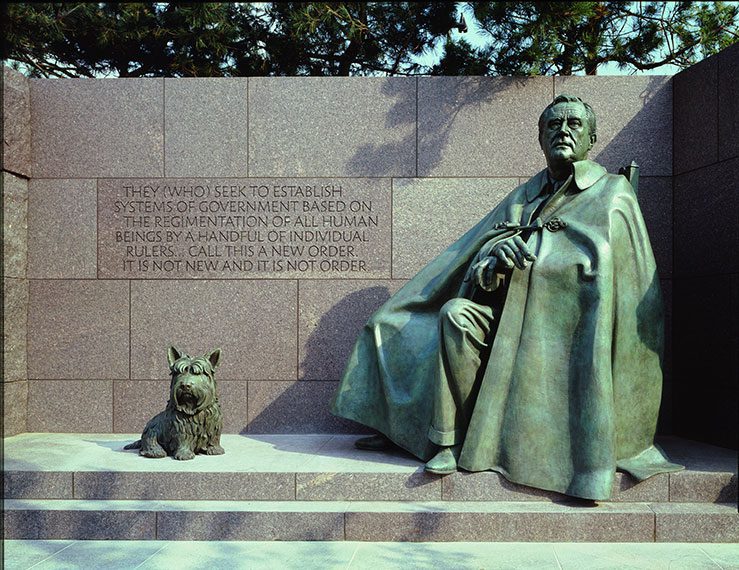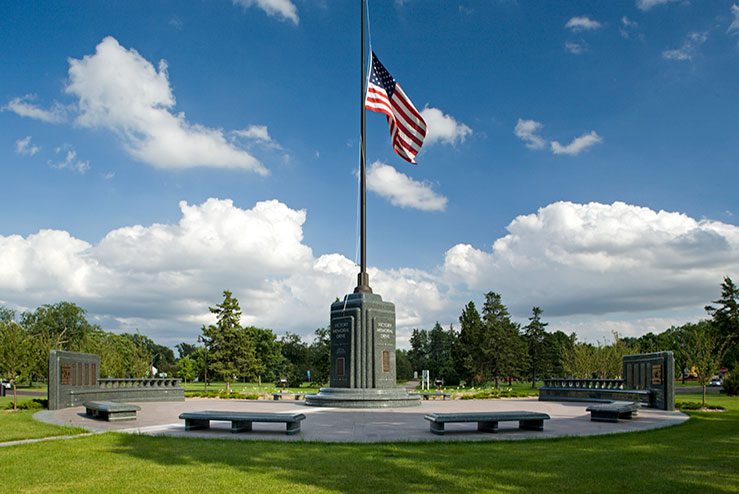
Is a North American stone or one that’s imported the right choice for your project? Here, we examine the considerations when making your decision.
Time Frame and Color Considerations
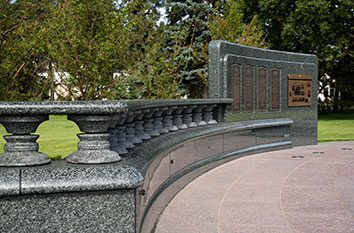

A project’s schedule is one of the first decisions to consider when weighing domestic or imported stone options. Although the actual fabrication times for natural stone fabrication are similar for both domestic and international product sources, transportation from the factory to the project site can be significant with an international quarry or fabrication facility. Ocean voyages can range from three to five weeks, not including delays that can occur at the point of origin or customs at the port of entry.
Keeping these potential delays in mind, a safe time frame for standard stonework from an international source is 16 to 24 weeks from release of the order. For complex stonework or large pieces, additional time should be allowed. Be very cautious on tight time frames, as it’s very difficult to expedite any of the process steps if the schedule begins to slip.
On the other hand, a domestic supplier seldom requires more than five to seven days for transport from the factory to the project site. When the schedule is critical, a North American stone source is essential to ensuring a successful outcome. The supply chain is almost always shorter with a North American source, allowing for better control from the quarry to fabrication facility, or in a best-case scenario, completely controlled by the manufacturer with quarry ownership.
Exploring Natural Stone Colors and Finishes
In addition to timeframe, color must be evaluated carefully. Is it a legacy project? Does the stone need to match or complement existing buildings and nearby structures? Then, a domestic stone may be the best source. The stone industry in the United States expanded during the 1980s, when natural stone surged in popularity as a cladding material. In response, many cities established legacy colors around key domestic stone colors to provide continuity in design.
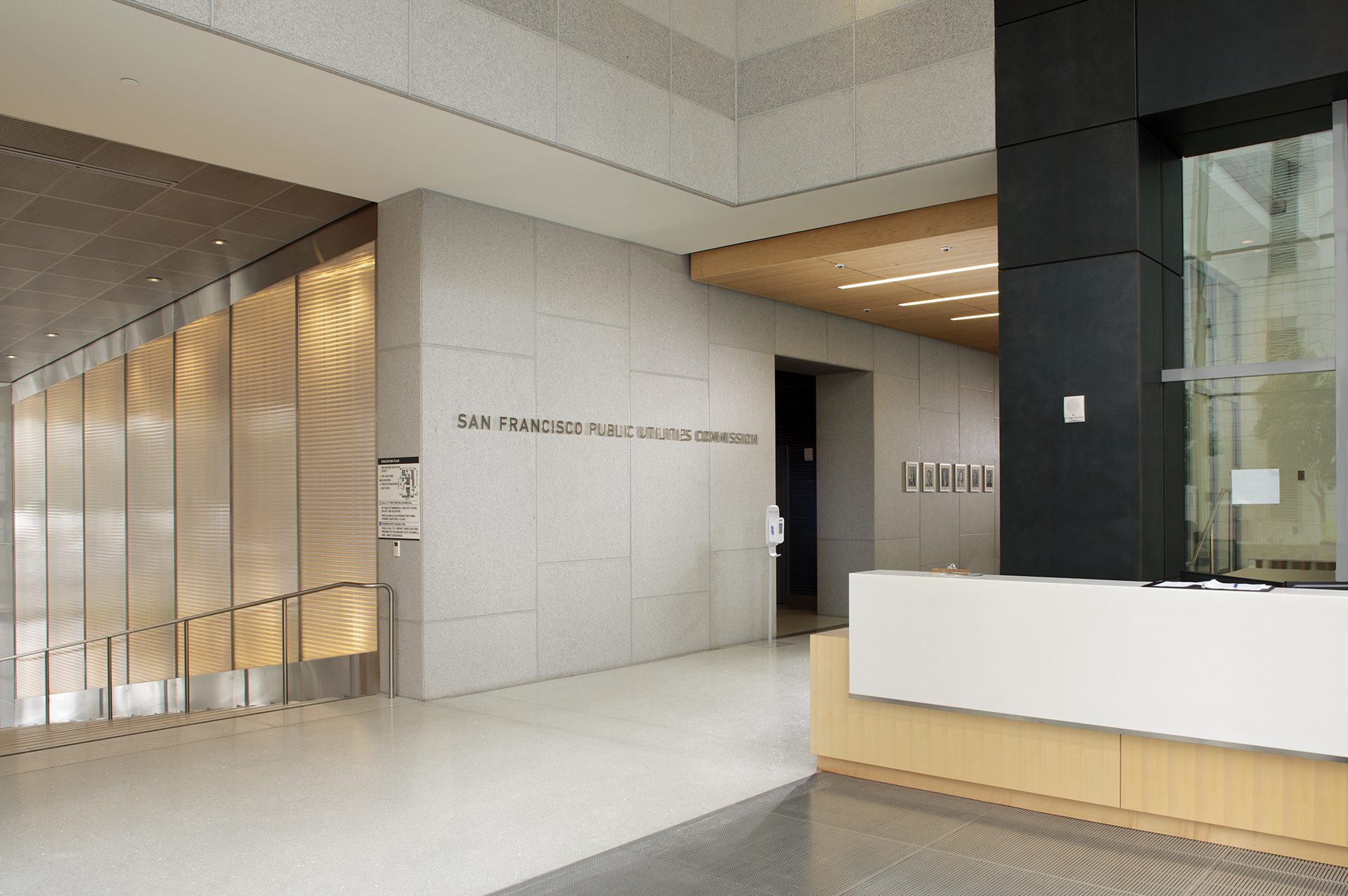

San Francisco Public Utilities Commission: Perhaps one of the best examples of a city with a legacy color is San Francisco. Since the late 1880s, Sierra White® granite quarried from Raymond, Calif., has been used throughout San Francisco. In downtown San Francisco, many of the classical, historic buildings are clad in pure white granite, and as you walk around the city, many of the curbs are still the original Sierra White granite.
Using Granite Building Materials to Blend Old and New
When the San Francisco Public Utilities Commission (SFPUC) needed a new building, the design team wanted to use to use Sierra White granite to complement the existing architecture. Building the structure called for a combination of styles.
“What we tried to do is to create architecture that appeals to the neo-classical Civic Center Plaza but also is clearly a building that looks to the future – aesthetically and technologically,” said Michael Rossetto, senior associate, KMD Architects. “Additionally, one of the primary goals we had was to build something sustainable –- to build something durable and beautiful so you’re not compelled to tear it down in 20 years.”
Specifically, the goal was to create a 100-year building, so the materials’ durability was important. Using granite was the perfect transitional material between the newer innovations incorporated and the civic center’s design. Additionally, design called for a tremendous use of glass in the building, and the granite provided a great anchor and balance with the glass.
“Our granite fabricator helped us when we were focusing on the technological aspects of the stone,” said Rossetto. “We spent a lot of time studying the different corner joints, the pros and the cons on how the stone would meet at the corners, the ability of the stone to be cut and beveled, and anchoring to a curtain wall system. The most rewarding sensation is to look at this monument and know it will be around for another 100 years.”
Veterans’ Memorials and Iconic American Projects
For veterans’ memorials and other iconic American projects, a domestic stone can be a high priority for stakeholders desiring to demonstrate patriotism. However, certain situations may arise when the decision-making committee does not realize the stone comes from another country. This sticky situation can occur when the fabrication facility does not own the quarry. The fabricator may be domestic, but it may import the stone from a foreign source. Good communication and asking the right questions can help decision-makers ensure their value for the project line up with the stone source.
Franklin Delano Memorial: Domestic stone was a high priority for the Franklin Delano Roosevelt Memorial on the National Mall in Washington, D.C. For this project, nothing but stone from an American quarry could symbolize the patriotism of one of the United States’ greatest leaders. The memorial consists of 12-foot-high walls of rugged, split Carnelian® granite from Milbank, S.D. quarry that appear as though they have just emerged from the quarry. The walls encompass four outdoor “rooms,” signifying the four terms of Roosevelt’s presidency. Dedication of the FDR Memorial in 1997 marked the culmination of a 20-year effort and building project of massive scope.
American landscape architect Lawrence Halprin selected Carnelian granite because of its similarity in color to the reddish gray fieldstone used on the Roosevelt estate at Hyde Park in New York. Of the 7.5 acres comprising the Roosevelt Memorial, 135,000 square feet of surface area is covered with granite.


Victory Memorial Drive: Like the Korean War Memorial, Victory Memorial Drive in Minneapolis is a tribute to the men and women who gave their lives in service to this country. Selecting a local stone was particularly important for the Victory Memorial Drive project, which commemorates fallen soldiers and nurses from Hennepin County who served in World War I. The beautifully landscaped, tree-lined boulevard is part of the Grand Rounds, a 50-mile tour of parkways and parks around Minneapolis. A striking tribute, the names of 568 men and women from Hennepin County who died in the war are inscribed on bronze crosses and stars.
The flag plaza includes granite balustrade walls, a granite flag base and benches, and new large granite gateway monuments at the entrances to Victory Memorial Drive. For the memorial, more than 4,500 square feet of Lake Superior Green® granite was used.
“We knew granite would be the main material from the beginning because of its longevity,” said Jason Aune Landscape Architect at LHB. “The Lake Superior Green® granite was quarried in Isabella, Minnesota, meeting the project’s native material requirement.
More than 4,600 square feet of Carnelian® was used for paving the 80-foot-diameter plaza. Additionally, more than 150 square feet of Sierra White® from Raymond, Calif., was incorporated into the plaza surface to create contrast. Radiant Red® from Fredericksburg, Texas, was used on the service banners on the gateway monuments.
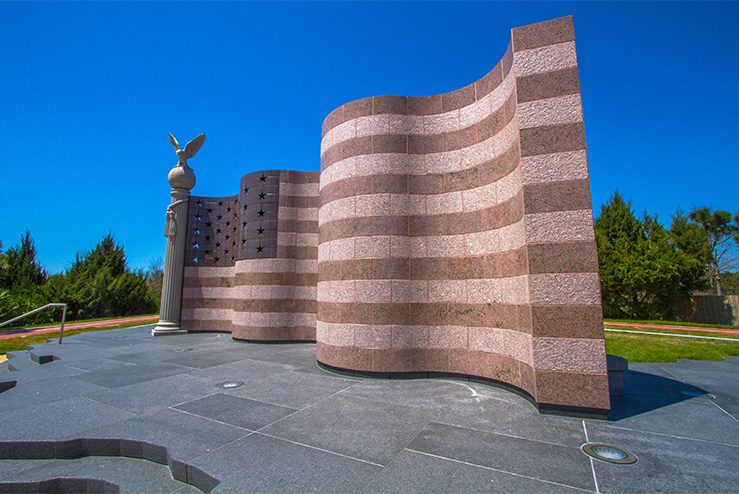

Collier County Freedom Memorial: Plans for the Collier County Freedom Memorial in Naples, Fla., began in 2004 when the Board of Commissioners declared September as Freedom Month in Collier County. They wanted to create a memorial that paid tribute to members of the armed forces, law enforcement, firefighters, and emergency medical personnel who gave their lives on September 11th, 2001. County officials also determined they wanted domestic fabrication and material for the project.
After years of planning and fundraising, the memorial was finally dedicated in September 2016. As visitors approach the memorial, set in the northeast corner of the 50-acre Fred W. Coyle Freedom Park, a bronze plaque contains a description sitting upon Lake Superior Green® and Sunset Red® granite. At the center of the memorial stands a 13-foot-tall by 40-foot-wide waving flag. Carnelian® granite creates the stars of the flag, and Sunset Red® in two finishes was utilized for the stripes. Mesabi Black® pavers and treads create a base shaped as the United States, and Kasota Valley® Limestone pavers surround the front of the base. An eagle, rough shaped on a 5-axis milling machine and then meticulously hand-carved in limestone sits on the column next to the flag.
Additional Installation Features
Visitors can walk up and touch two steel slabs from the World Trade Center or admire the flag and three granite benches that memorialize the three attacks of that day. In total, nearly 4,900 square feet of natural stone was used to bring this design to life. Precise fabrication was necessary to create the stars in the waving flag, as well as the curved granite pieces for the strips. Three-dimensional (3D) modeling and computer-aided design (CAD) drawings were created to confirm an exact fit for the various intricate pieces on the memorial, thereby assuring a smooth installation.
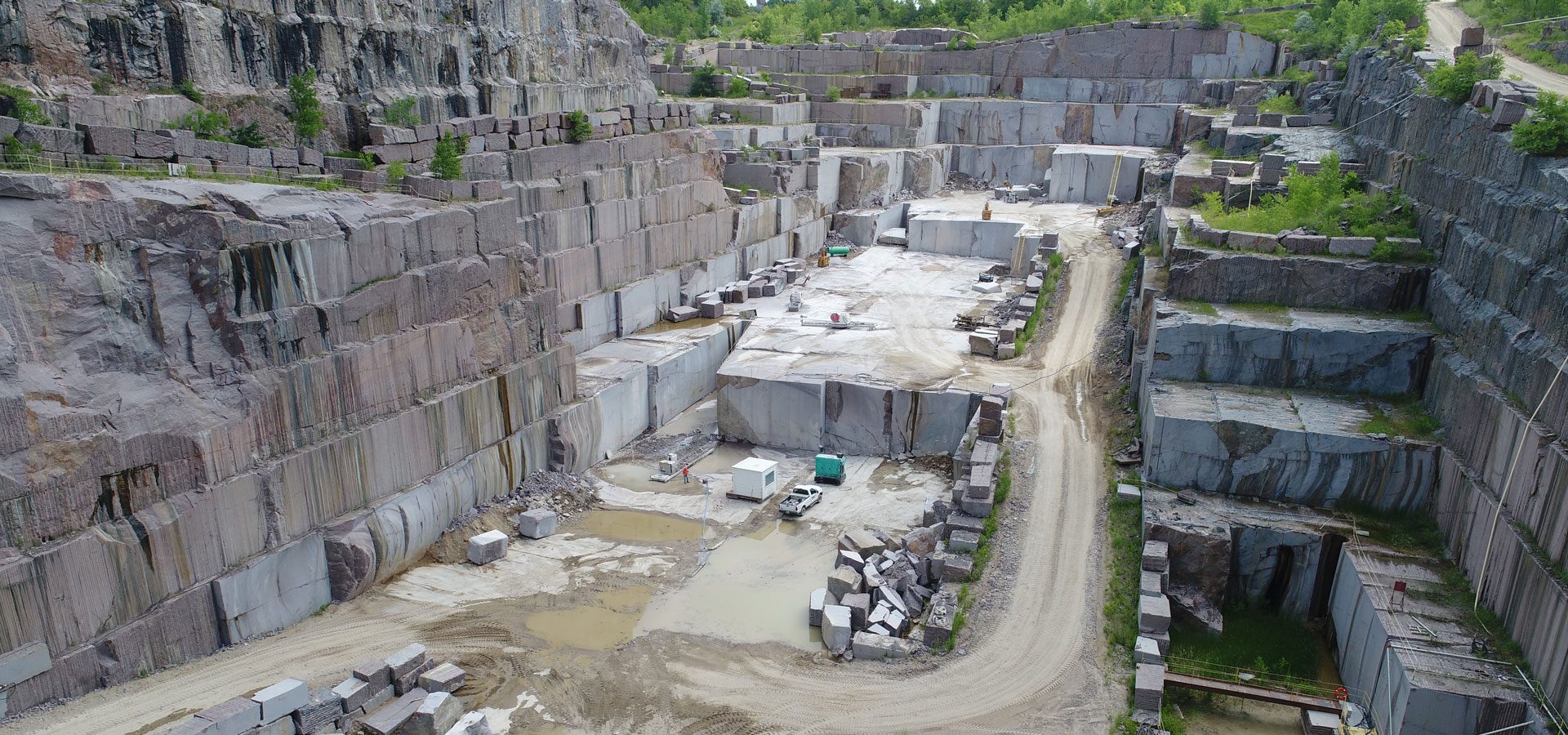

Sustainability: Harnessing the Power of Longevity to Lower Carbon Footprint
Sustainability is also an important concern for many project owners today. With minimal processing, natural stone contains a lower embodied energy than almost any material it replaces and is durable. This longevity results in conversing the energy and resources of not demolishing and rebuilding.
As design teams and building owners have focused more on specifying sustainable products in recent years, many were left wondering how to know for certain their stone is produced in an environmentally responsible manner. In response, the stone industry developed a certification program in order to demonstrate environmental stewardship. The American National Standards Institute (ANSI)/Natural Stone Council (NSC) 373, Natural Dimension Stone Standard Certification, was created to drive sustainability practices in the natural stone industry. Stone certification provides a layer of transparency and authentication to the production process, which was previously only self-reported by companies.
While the third-party verified ANSI/NSC 373 is an international standard and available for stone producers around the world, only stone companies in the United States have presently chosen to seek and achieve certification. As the standard gains acceptance around the globe, certified products will be one of the key differentiators among stone companies.
Certifications Matter When Choosing A Supplier
Whether working with a domestic or international stone supplier, it is important to source a certified stone supplier for project owners with sustainability goals. Now that many project owners are seeking certification with green building programs, they can know with certainty which stone suppliers align with theirs goals of minimizing waste, maintaining a small environmental footprint, and optimizing water and energy use. Since ANSI/NSC 373 is accepted by green building programs, such as Leadership in Energy and Environmental Design (LEED) v.4 and the Living Building Challenge (LBC) v. 3.1, a clear path exists to help projects achieve sustainability goals.
A list of NSC certified stone companies and quarries can be found here: http://info.nsf.org/Certified/Sustain/Listings.asp?ProdCat=NSC373&
Final Considerations
No matter the type of project, the goal remains the same – a beautiful tribute that stands the test of time. Natural stone meets these requirements as the most striking, durable material to use for building projects.
Article C/O The Construction Specifier
